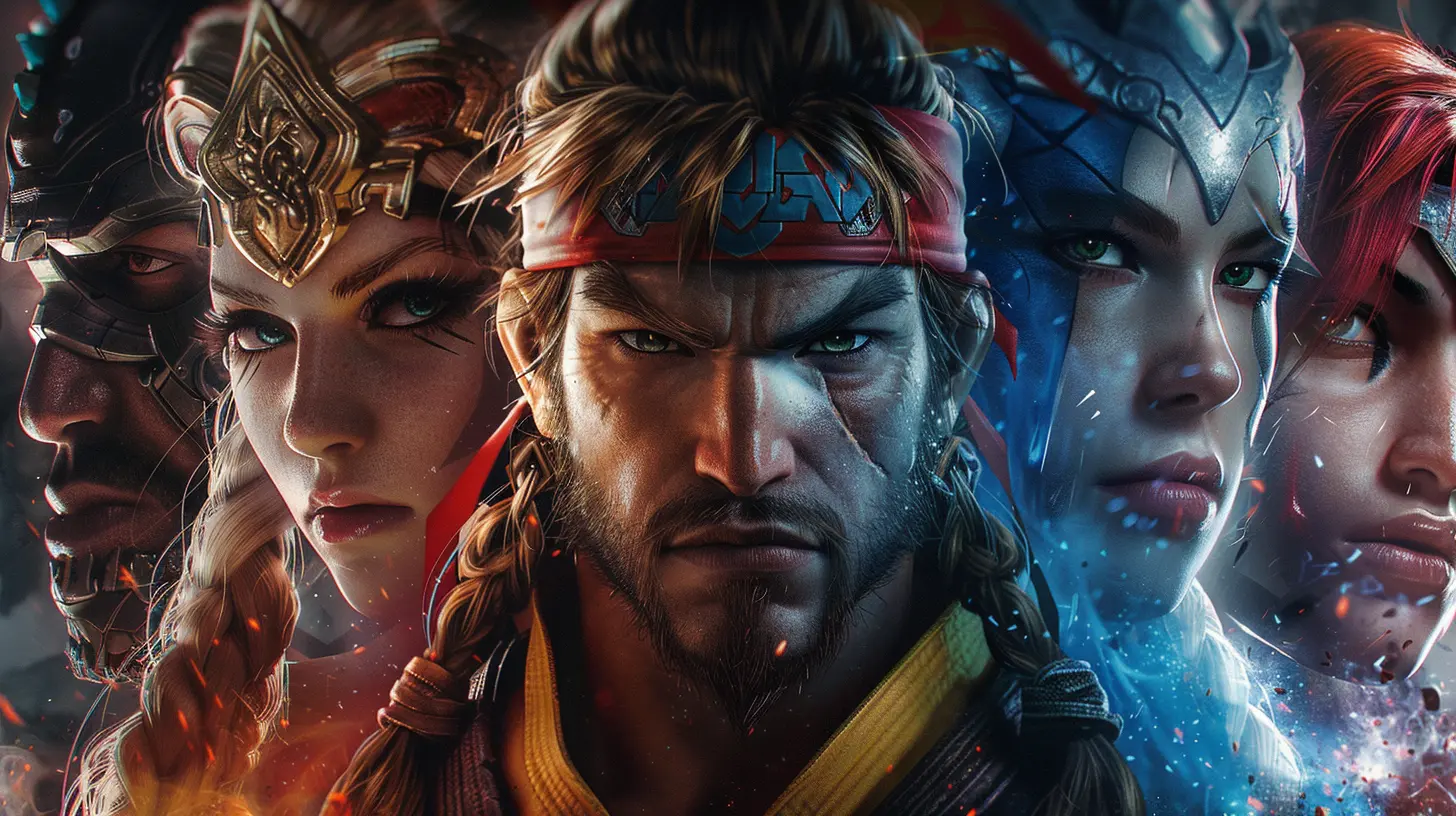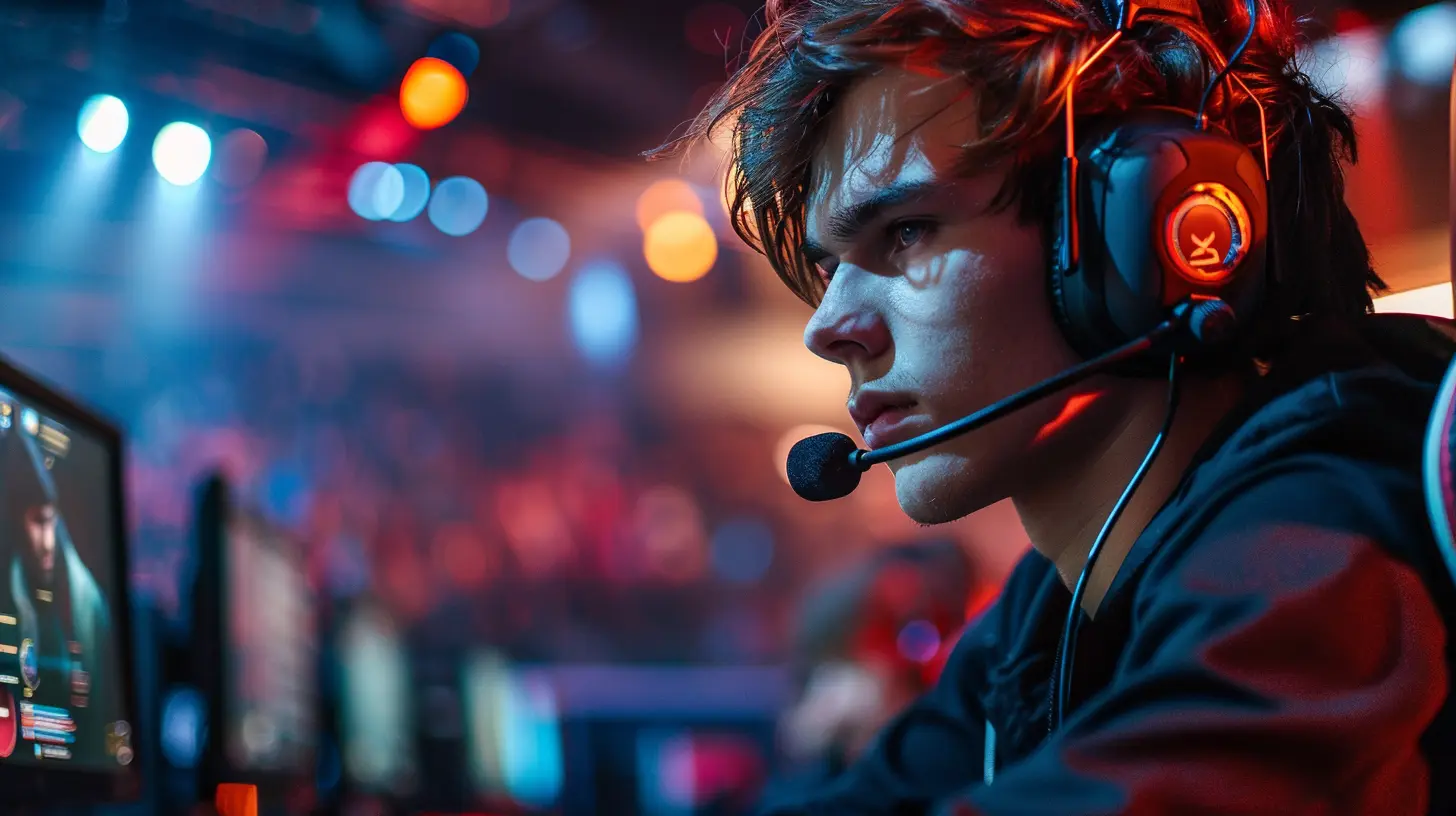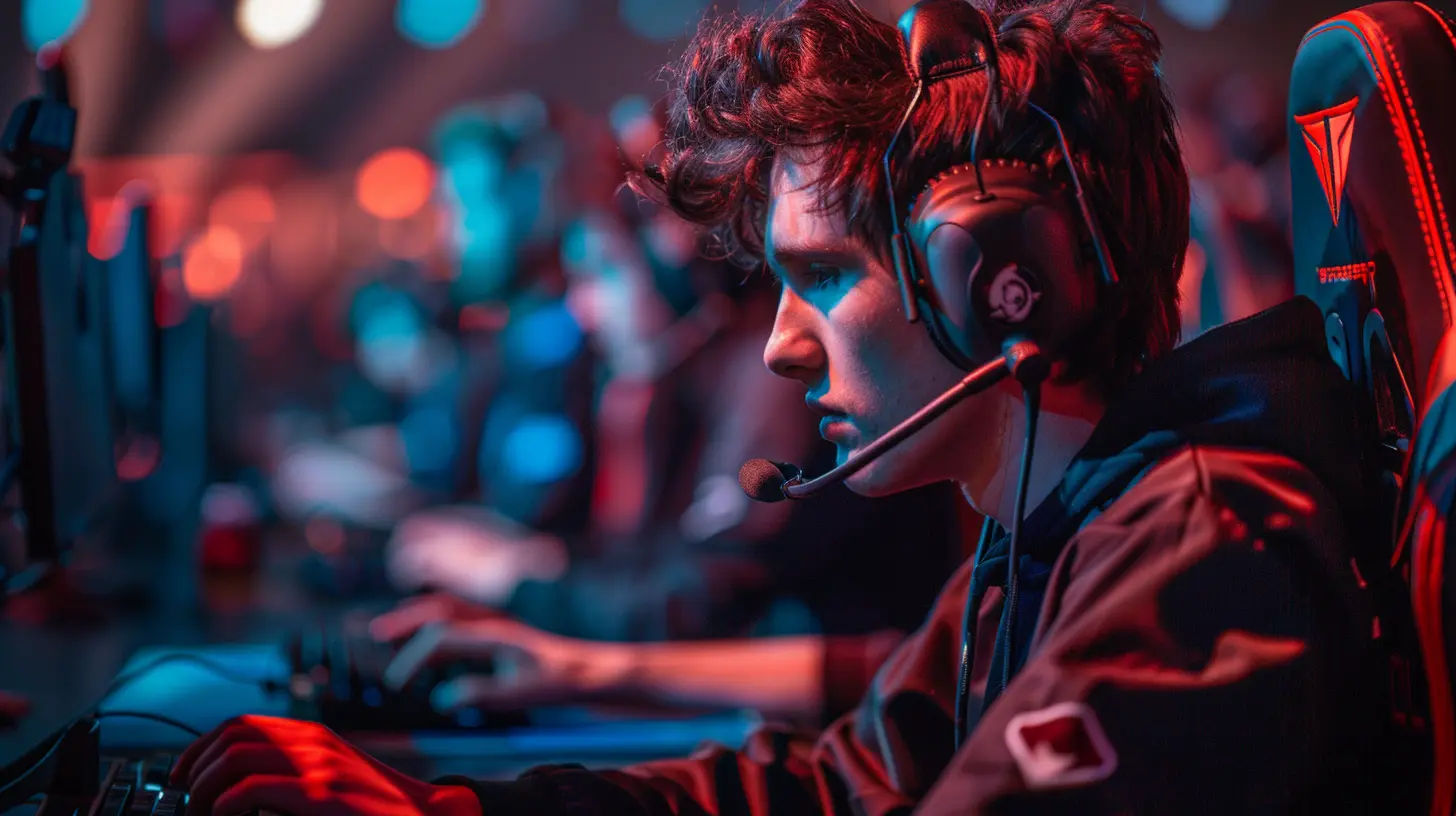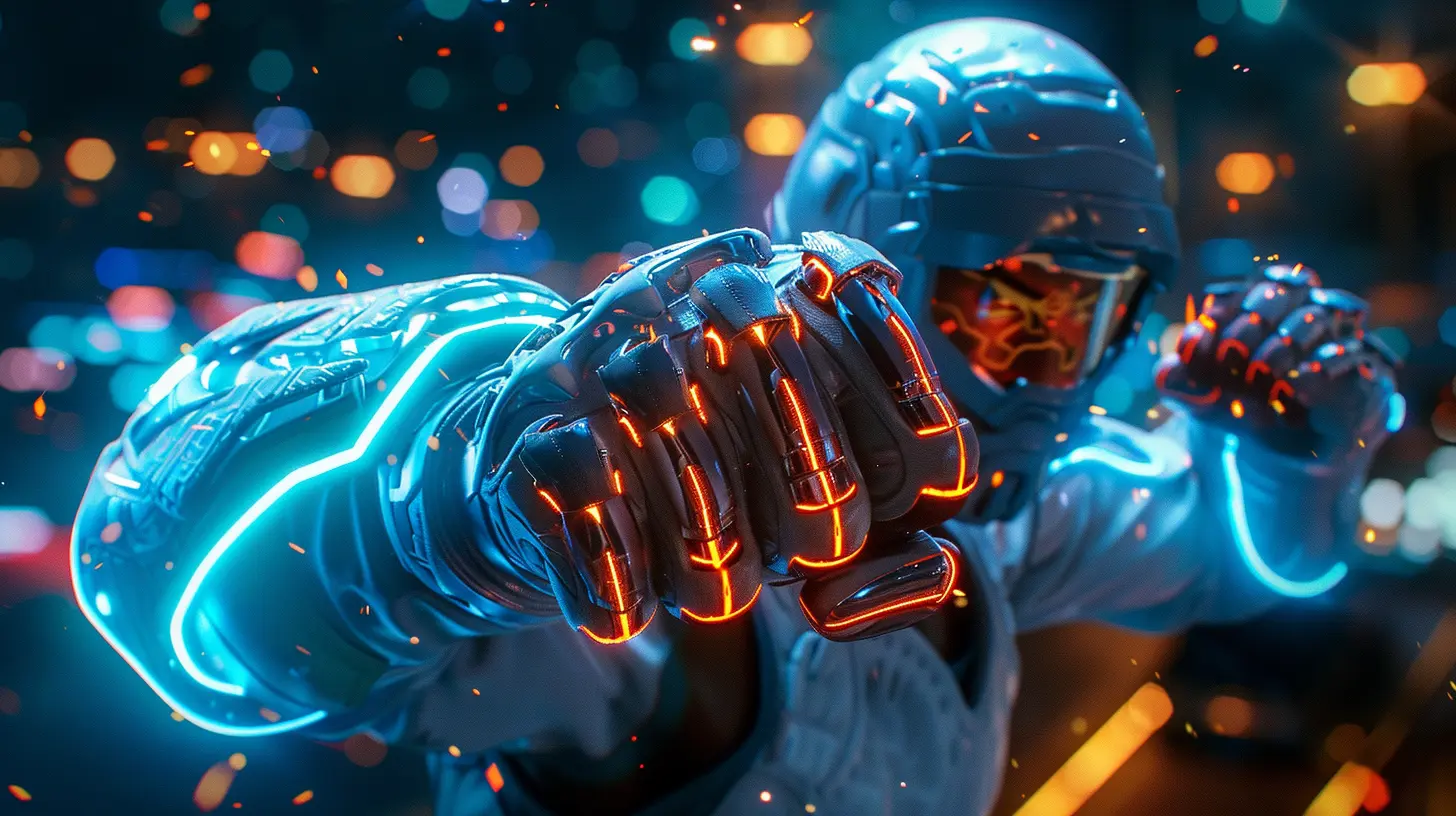How E-Sports Revolutionized the Fighting Game Community
4 September 2025
For years, fighting games have been a cornerstone of competitive gaming. From heated arcade showdowns with quarters stacked on arcade cabinets to intense head-to-head battles in living rooms, these games have always been about skill, strategy, and pride. But let’s face it—fighting games were largely seen as a niche within the broader gaming world. Then, e-sports entered the picture like a spinning piledriver, flipping the narrative on its head.
E-sports didn’t just change the fighting game community (FGC); it revolutionized it. If you’ve ever wondered how a formerly underground scene became a global phenomenon, buckle up—we’re about to dive right in. 
The Birth of E-Sports Meets the FGC
When you think of e-sports, what’s the first thing that comes to mind? Massive arenas? Bright lights? Teams with flashy names? That’s all true today, but back in the '90s and early 2000s, the concept of organized competitive gaming was nowhere near this polished.Sure, games like "StarCraft" and "Counter-Strike" were trailblazing the e-sports scene, but where did that leave fighting games? The FGC was more like a scrappy underdog. Its tournaments were often grassroots events held in small venues, with tight-knit groups of players who seemed less concerned with sponsorship deals and more invested in proving who had the best combo execution.
But once e-sports grew legs and began sprinting, it took the FGC along for the ride. Competitive fighting games like Street Fighter, Tekken, and Super Smash Bros. found a massive stage on which to shine. Suddenly, what used to be weekend hangouts turned into high-stakes competitions streamed to audiences of thousands—or even millions—online. 
From Arcades to Arenas: The Evolution of Fighting Game Tournaments
Let’s take a step back for a second. Fighting games have always had a competitive edge—it’s pretty much baked into their DNA. Back in the arcade days, it wasn’t uncommon to see players gather around machines, cheering on players who were quickly becoming local legends. But as arcades began to fade away (RIP quarters and sticky joysticks), the scene started to shift.Enter Evolution Championship Series (EVO). EVO, which started as a small tournament called "Battle by the Bay" in 1996, eventually became the world’s largest fighting game competition. For many in the FGC, EVO felt like the Super Bowl of fighting games—a dream stage for anyone who loved to throw down in digital battles.
But here’s what changed over time: E-sports brought in funding, structure, and visibility. Suddenly, fighting game tournaments weren’t just people crammed into local venues—they were held in massive convention centers or broadcast live on platforms like Twitch. EVO alone drew in over 1.2 million viewers during its peak. Yeah, you read that right—millions of people watching competitors duke it out in Street Fighter V, Dragon Ball FighterZ, and more. 
Livestreaming: The Ultimate Game-Changer
Let’s not sugarcoat it: Livestreaming was the secret sauce that helped e-sports—and the FGC—skyrocket to fame. Before platforms like Twitch and YouTube Gaming, only the most die-hard fans would show up to local tournaments or hunt down grainy footage on forums. Why? Accessibility sucked!Then Twitch burst onto the gaming scene like a fireball special move. Suddenly, tournaments were just a click away. It didn’t matter if you lived in New York or some tiny town without an arcade; you could tune in to watch pros face off in real-time.
But it wasn’t just about the tournaments themselves. Livestreaming gave the FGC something it desperately needed: a community hub. Streamers became ambassadors of the culture, showcasing everything from ranked matches to bizarre moments of trash talk (looking at you, salty runbacks). Twitch chat, for better or worse, became the digital version of the old arcade crowd—hyped, chaotic, and unfiltered. 
Prize Pools & Sponsorships: The Money Game
Remember when winning a fighting game tournament meant taking home a cheap trophy and maybe some bragging rights? Those days are long gone. E-sports money has completely changed the stakes.The fighting game scene may not have the seven-figure prize pools seen in games like League of Legends or Dota 2, but sponsorships and better-organized events have brought life-changing payouts to top players. Major brands like Red Bull, Capcom, and Bandai Namco now invest heavily in fighting game tournaments.
Take Capcom Pro Tour, for example. It transformed Street Fighter from a community-driven competition into a polished professional circuit with serious money on the line. Fighters like Daigo "The Beast" Umehara and SonicFox have become e-sports icons, earning not just sponsorships but also a loyal fanbase worldwide.
Diversity & Inclusion: A Global Battlefield
One of the coolest things about the FGC in the e-sports era? Its diversity. Fighting games have always been a global genre, with players from Japan, the United States, South Korea, and Brazil all making their mark.E-sports amplified this diversity tenfold. It’s not just about representation—it’s about celebration. Every tournament highlights how fighting games transcend cultures; they speak a universal language of passion and competition.
Plus, let’s talk about accessibility. Unlike MOBAs or first-person shooters, where teamwork and expensive gear can sometimes gatekeep newcomers, fighting games are much more straightforward. You pick a character. You learn their moves. You throw down. Whether you’re on an arcade stick, a controller, or even playing on a budget setup, you’ve got a shot.
The Rise of Local Scenes in a Global Era
Even as e-sports made the FGC a global phenomenon, local communities still thrive. In fact, they’re the lifeblood of the scene. Ever hear of "Wednesday Night Fights"? How about "Next Level Battle Circuit"? These smaller, regional tournaments keep the passion alive at the grassroots level, ensuring new players have a chance to step up and make a name for themselves.The balance between global and local has been one of the FGC’s biggest strengths. While e-sports gave the scene global exposure, it never erased the FGC’s grassroots identity. It’s like watching a tree grow; the roots remain strong even as the branches stretch toward the sky. Cheesy metaphor? Maybe. But you get the point.
The Role of Personality: Trash Talk and Rivalries
Let’s be real—what’s a good fighting game without some rivalry? The FGC thrives on personality. It’s not just about who’s the best but how they play and interact with their opponents.E-sports amplified this big time. Players like Tokido, Justin Wong, and SonicFox became household names because they didn’t just win—they gave fans a story to latch onto. Who could forget Daigo’s legendary parry moment at EVO 2004? That clip alone has been replayed millions of times because it wasn’t just a feat of skill; it was a moment of passion.
And yeah, trash talk has its place too. Whether it’s friendly banter or heated rivalries, this kind of human connection keeps the FGC endlessly entertaining. In the e-sports world, the FGC stands out for its raw, unapologetic authenticity.
Challenges Still Facing the FGC in E-Sports
While e-sports brought the FGC into the spotlight, not everything is sunshine and rainbows. There are still challenges to overcome.For one, fighting games don’t always enjoy as much mainstream popularity as other genres. Games like League of Legends or Fortnite often overshadow even the biggest FGC events. The result? Smaller prize pools and fewer sponsorships compared to other e-sports.
Another issue is the high barrier of entry for some newcomers. Fighting games are notoriously technical, and mastering mechanics like frame data or execution can feel overwhelming. That said, games like Street Fighter 6 and Tekken 8 are working on bridging the gap with beginner-friendly systems.
Wrapping Up
So, how did e-sports revolutionize the fighting game community? Think of it like this: e-sports turned the FGC into a rags-to-riches story. What was once a close-knit group of enthusiasts is now a global movement, pulling in millions of fans and elevating the genre to unprecedented heights.But it’s not all about the money or the shiny production value. At its core, the FGC has retained its scrappy, passionate spirit. It’s still about rivalries, epic moments, and that indescribable thrill of proving you’re the best in the room—or on the stream.
all images in this post were generated using AI tools
Category:
E SportsAuthor:

Madeleine McCaffrey
Discussion
rate this article
1 comments
Quentin McWain
This article beautifully captures the transformative journey of the fighting game community through e-sports. It's inspiring to see how passion and dedication have united players and fans alike, creating a vibrant space for connection and growth. Kudos to everyone involved in this remarkable evolution! Your stories truly matter.
September 5, 2025 at 4:27 AM

Madeleine McCaffrey
Thank you for your thoughtful comment! I'm glad the article resonated with you and highlighted the incredible unity and growth within the fighting game community. Your support means a lot!


